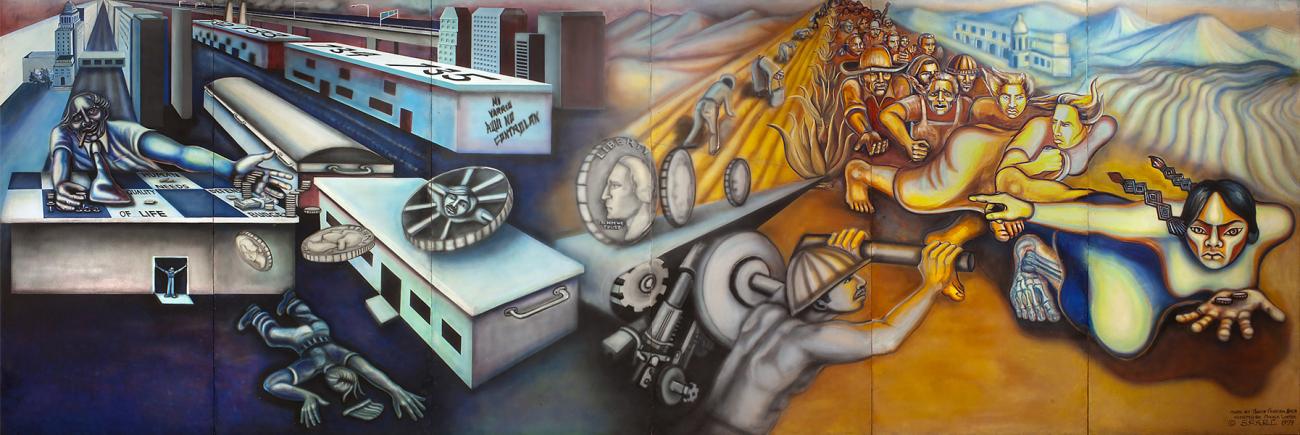SAAM talks with the artist about her inspirations and the process of creating a portable mural

by Wendy Rose and Claudia
Judith Baca is a painter, muralist, and scholar who works collaboratively within communities to create sites of public memory. Her public arts initiatives reflect the lives and concerns of populations that have been historically disenfranchised, including women, the working poor, youth, the elderly, LGBTQ+, and immigrant communities.
Editor’s note: In this interview, there are mentions of artworks that depict a rape scene and a murder.
SAAM: Can you tell us what inspired your mural Uprising of the Mujeres?
Judy: In 1977, when I returned to Los Angeles from the Siqueiros Taller [a mural painting workshop in Mexico led by Luis Arenal and Angelica Siqueiros] this mural design, Uprising of the Mujeres, was rejected by the men on my team. The design my team chose was an image about consumerism. I could not participate in the making of the mural; it was an image that looked like a rape.
It was hard for me to believe that they thought it was a good idea. But they felt that women were the basis of consumerism, as the new family leaders of economics; therefore, they were the ones to blame for all its perceived evils. Their design was a critique of consumerist policies and practices, in the sense that, very much like Mexican muralist Jose Clemente Orozco’s piece Catharsis in the Palacio de Bellas Artes, it was an image that blamed women. In the case of Orozco’s amazing artwork, the woman is at the basis of war, and in the case of the team in Taller, she’s at the basis of consumerism. Since I was the only woman in the workshop of twenty-two men it was hard to find support for my position.
I designed an alternative image that was rejected. There was only one man on the team that supported my idea of a powerful Indigenous woman coming out of the fields. He was a Chicano from south Texas. I was encouraged by him. When I came home, I finished the design and put it on panels, very similar in terms of scale to a mural, and painted it at the Social and Public Art Resource Center (SPARC) in LA.
…